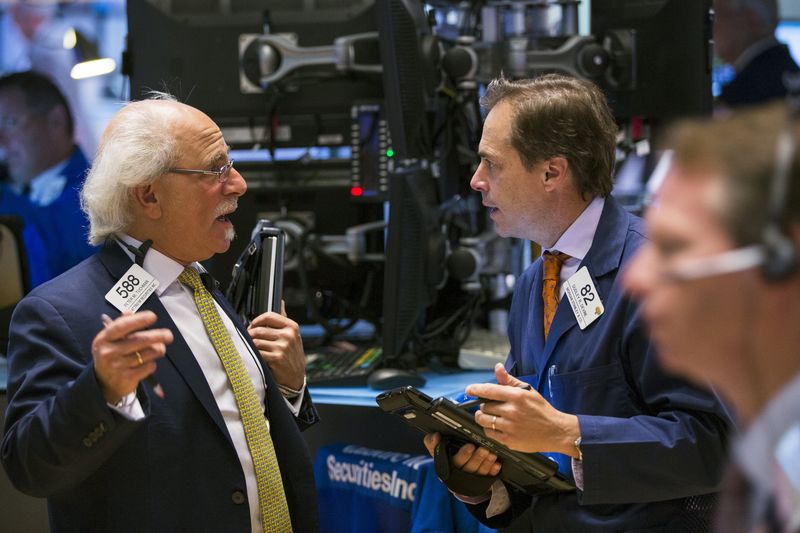Investing.com - Here are the top five things you need to know in financial markets on Monday, February 12:
1. World Stocks Bounce Back After Turbulent Week
Global stock markets kicked off the new week with strong gains, as jitters over a sudden spike in volatility that wiped off $1 trillion in market capitalization last week appeared to ease. Analysts attributed the upbeat action in part to an encouraging finish on Friday for U.S. equities.
Asian markets closed mostly higher, with benchmarks in both South Korea and China gaining around 1%, while Japan's Nikkei was closed for a holiday.
In Europe, the continent's bourses posted solid gains, rebounding from last week's six-month lows, as strength seen in markets overseas boosted sentiment. In early action Monday, Germany’s DAX index put on about 2%.
On Wall Street, U.S. stock futures pointed to a positive open, indicating markets could extend a move higher seen at the close of last week. Dow futures were up nearly 300 points, or 1.2%, while S&P 500 and Nasdaq futures also pointed to gains of more than 1% at the open.
The moves came after U.S. indexes rebounded on Friday, although the Dow still had its worst week in two years. Both the Dow and S&P 500 declined 5.2% on the week on investor concerns over rising interest rates.
2. Treasury Yields Continue Higher; U.S. 10-Year Hits 2.9%
U.S. Treasury yields continued this year's rally, with the benchmark 10-year note reaching an intraday high of 2.902%, a level not seen since January 2014. It was last at 2.884%, up 5.1 basis points, or 1.8%.
The 10-year yield has not been above 3% since late 2013 and some investors believe that level will be tested in the weeks ahead. It started the year at 2.4%.
If yields continue to breakout, that will certainly start weighing on equities again. Rising bond yields can crimp demand for assets perceived as riskier, such as stocks, particularly when those yields are higher than those of equities. The S&P 500's dividend yield is currently 2.34%.
Meanwhile, in Europe, bond yields in Germany held near multi-year highs, bolstered by the view that the European Central Bank is getting closer to ending its massive stimulus program.
3. Bitcoin Prices Rally Back Towards $9,000
Bitcoin prices seemed to have found a bottom, as the digital currency made its way back toward the $9,000-level, moving well off a four-month low of below $6,000 last week.
Bitcoin was last up around 8% at $8,770 on the Bitfinex exchange. Prices have been on a steady climb since comments made by U.S. regulators at a Senate hearing last Tuesday were construed as more positive than expected.
Ethereum, the world’s second largest cryptocurrency by market cap, was up roughly 7% at $864.83.
Meanwhile, Ripple's XRP token was trading at $1.0510, up nearly 10% for the day.
4. Oil Rebounds After Worst Weekly Loss In Two Years
Oil prices started the week in positive territory, after finishing lower for a sixth straight session on Friday to tally their worst weekly loss in two years.
U.S. West Texas Intermediate crude futures rose $1.03, or 1.7%, to $60.23 per barrel, while Brent futures advanced 98 cents, or 1.5%, to $63.75 per barrel.
WTI crude lost roughly 9.6% last week, which was the biggest such decline since January 2016, while Brent gave up about 8.5%, as investors continued to fret over soaring U.S. output levels.
5. Trump To Unveil Infrastructure Plan
The White House will unveil its long-awaited infrastructure plan, fulfilling a signature campaign promise of President Donald Trump. The proposal includes $200 billion in federal infrastructure spending over a decade, which would be paid for through cuts elsewhere in the budget.
The plan represents Trump's opening salvo in what is already shaping up to be a long and complex debate in Congress over how best to shore up the nation's infrastructure.
The dollar index, which gauges the U.S. currency against a basket of six major rivals, was a shade lower at 90.10, erasing some of the gains last week when the dollar enjoyed its best weekly performance since 2016.
Market players looked ahead to a busy week of economic data, including monthly inflation indicators, for further clues on how fast the Federal Reserve will raise interest rates this year.
